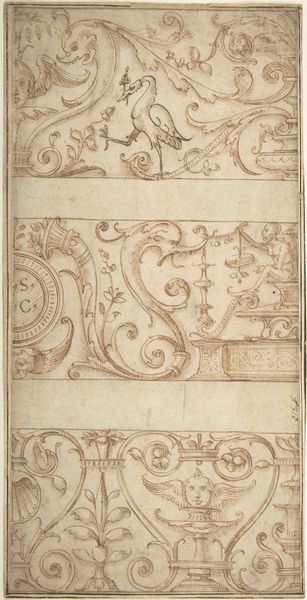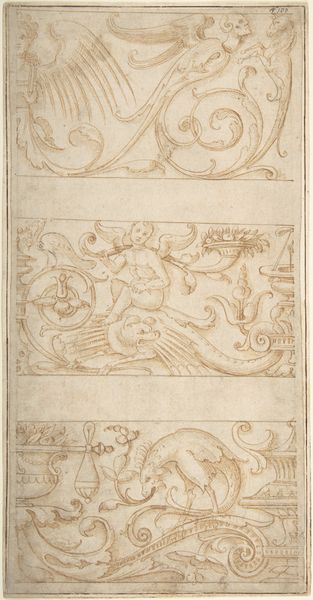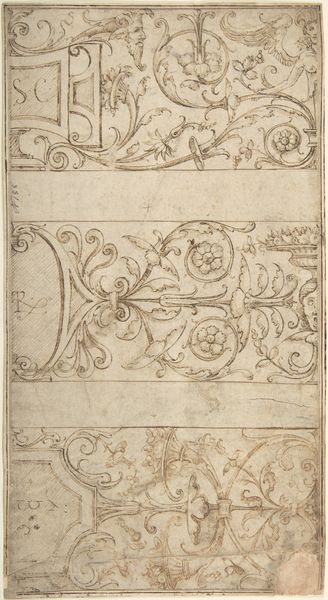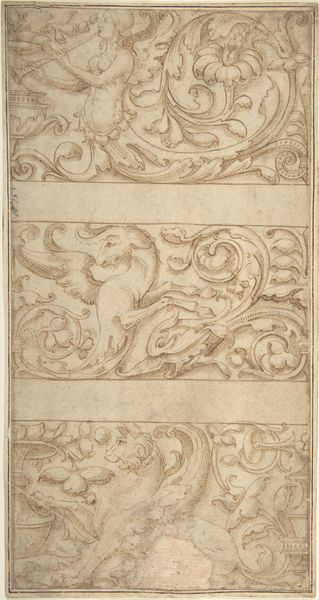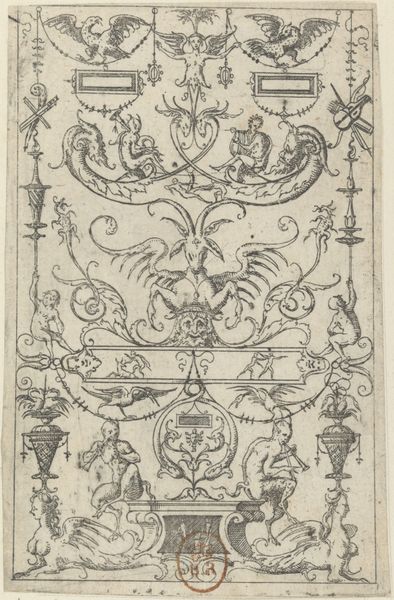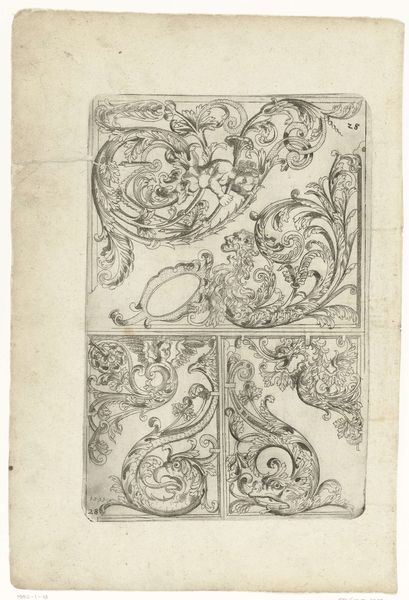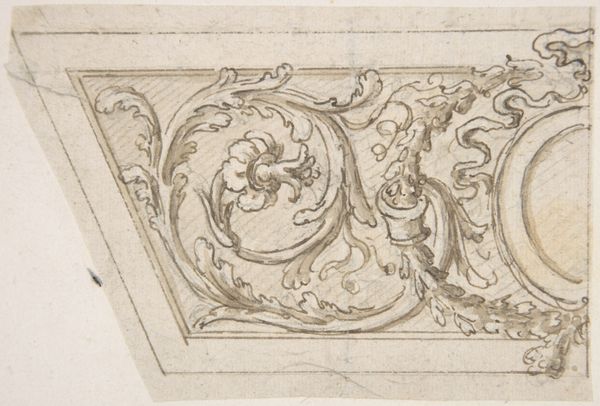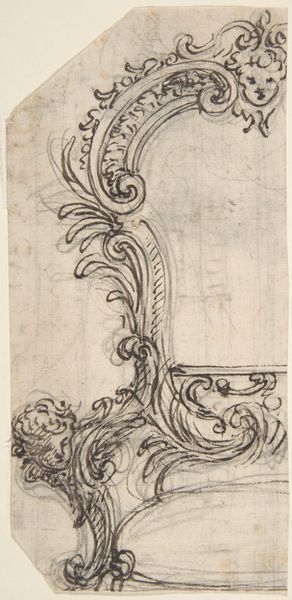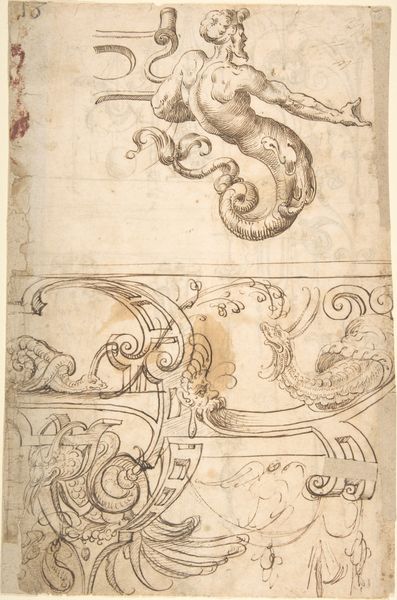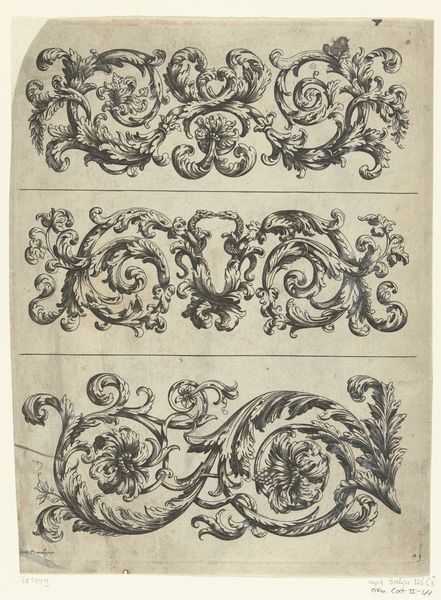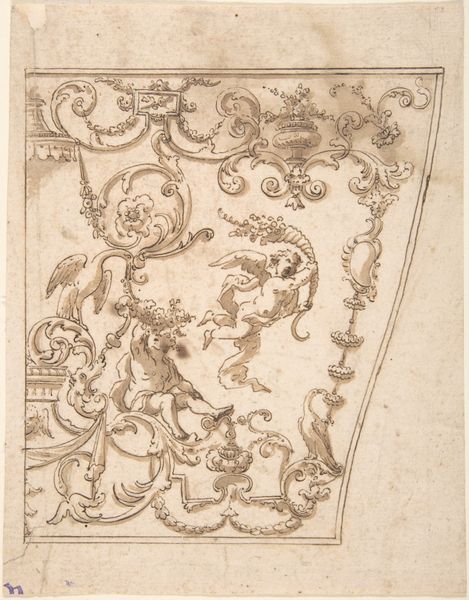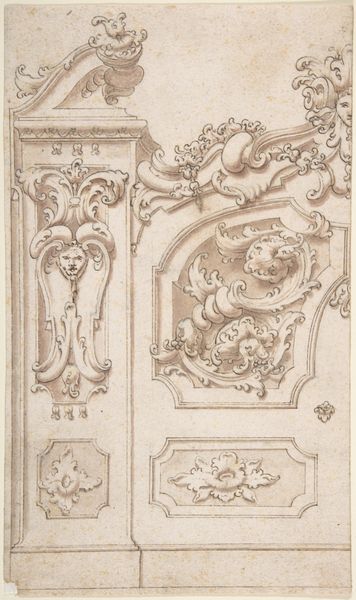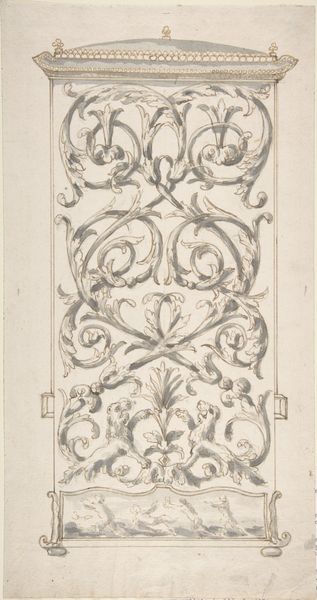
Antique-Style Ornamental Frieze Design: Grotteschi with Figures, Cornucopiae, and Shields. 1500 - 1550
0:00
0:00
drawing, print, etching, pencil
#
drawing
# print
#
etching
#
pencil sketch
#
etching
#
figuration
#
11_renaissance
#
pencil
#
italian-renaissance
#
profile
Dimensions: 13 1/2 x 6 1/4 in. (34.3 x 15.8 cm)
Copyright: Public Domain
Curator: Here we have an "Antique-Style Ornamental Frieze Design," created anonymously sometime between 1500 and 1550. It's an etching, rendered in pencil, housed here at the Metropolitan Museum. Editor: Well, it certainly looks like an intricate puzzle! My first thought is about the stark contrasts despite its delicate lines; it creates a captivating visual hierarchy. Curator: Indeed. This piece falls squarely within the Italian Renaissance tradition of grotesque design. Notice the combination of human, animal, and plant forms all intertwined? It represents a visual departure from classical purity. Editor: Grotesque indeed. There’s an element of playfulness here too, isn't there? Consider the impish figure holding a mirror. The work defies clear symbolic meaning and seems rooted in a certain visual freedom. What purpose might that serve? Curator: Functionally, designs like this one found their place in interior decoration. Think of the Vatican loggias. But socially, these ‘grotteschi’ were meant to inspire wonder. In those spaces, they evoked an otherworldly escape. Editor: I appreciate the fluidity of the lines. And how do we approach such decorative pieces through formalism, or should we let their free flowing imagery just be, as historical artifact? Curator: One cannot separate the line, weight and form with it’s purpose. Even what seems purely decorative is built upon structure and mathematical principles, allowing viewers to appreciate that perfect relationship. Editor: I concur that the medium plays a vital role. What's fascinating to me is the political tension present during the early sixteenth century that this piece, in its small way, reacted against. Curator: Exactly. By embracing "the grotesque" they directly reject the traditional values. A subversive stance through mere ornament. Editor: Considering everything, it makes you appreciate how design serves purposes far beyond visual charm, even offering profound reflection. Curator: Agreed, by examining art with historical understanding or a trained eye, you gain multiple layers of insight.
Comments
No comments
Be the first to comment and join the conversation on the ultimate creative platform.
